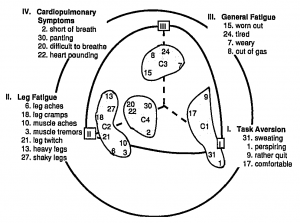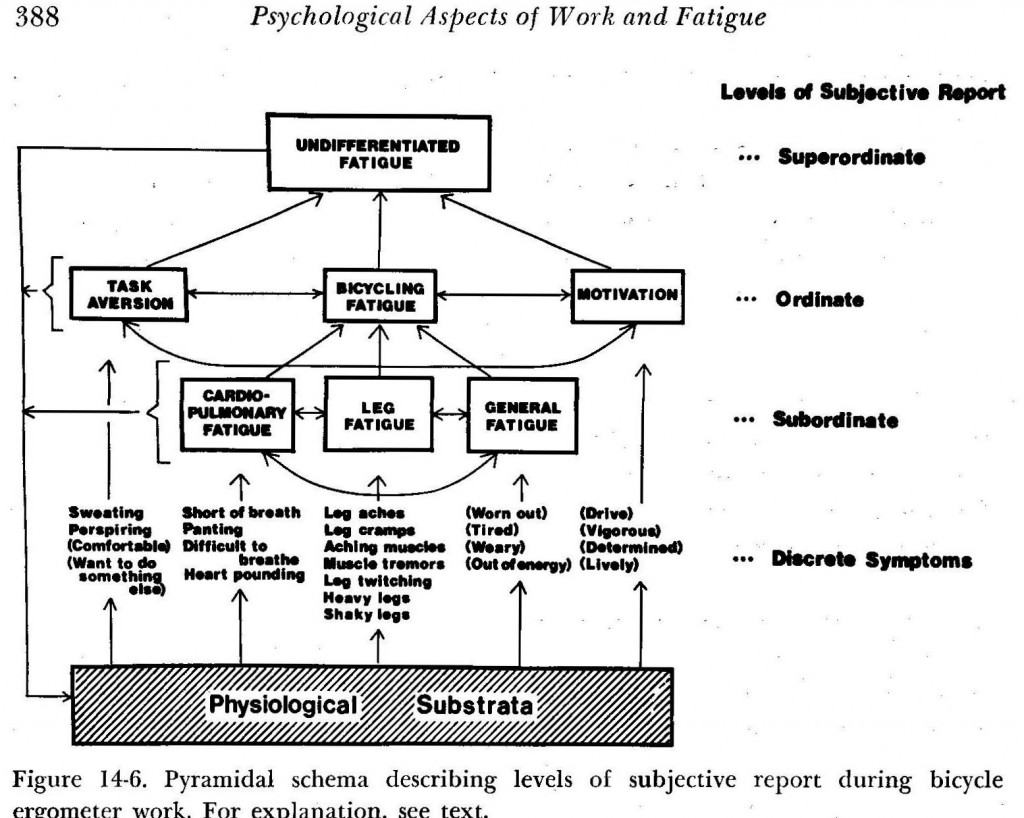Professor: Dr Arthur Dickinson, I apologize for leaving your name off the Stockholm article and presentation. In fact, Art’s Applied Exercise Physiology Lab was the actual location of the study.
Student: Wasn’t this presentation based on a preliminary analysis of Dave Stamper’s MS thesis with Dr Art Dickinson as his advisor and in Art’s lab?
Professor (remorsefully): Yes and Yes. My regrets.
Student: Thank you. And what kind of clues did you find between physiology and perceptions?
Professor: Our working hypothesis was that:
any impairments in the functioning of the motor and cardio-pulmonary systems would be associated with an increase of symptom severity that would influence the duration [of] a constant work task.
Professor: Please right click the following link and download the PDF if you want to look at the methods, etc.: Stockholm 1975 Presentation

